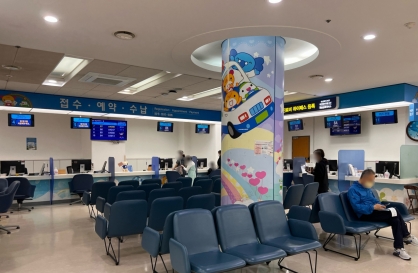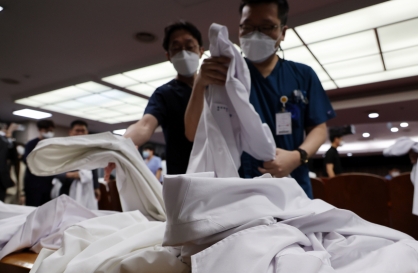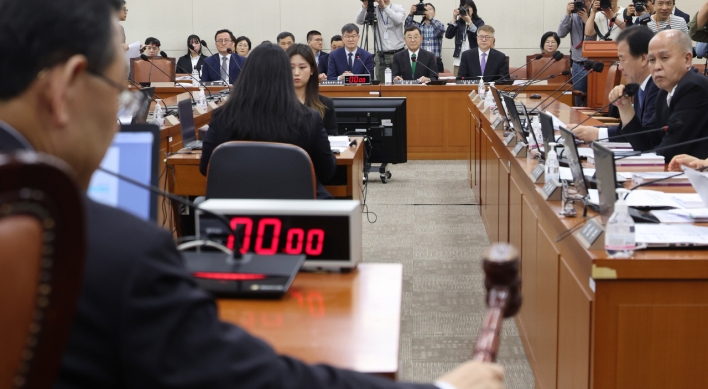[Weekender] Tackling urban decline
Regions push projects to revive shattered communities, boost local economy
By 손지영Published : Jan. 15, 2016 - 17:50
Like many agricultural towns in Korea, Seocheon in South Chungcheong Province was grappling with ways to foster new growth engines and revitalize the local economy a couple of years ago.
With its traditional income sources -- farming and fisheries -- dwindling amid the nation’s fast industrialization, the town located some 200 kilometers south of Seoul, had to watch its community falling apart and the children faced with no future. However, instead of attracting new businesses to rejuvenate the regional economy, the town made a very surprising choice -- to revive hopes and bring the community back together first.
With its traditional income sources -- farming and fisheries -- dwindling amid the nation’s fast industrialization, the town located some 200 kilometers south of Seoul, had to watch its community falling apart and the children faced with no future. However, instead of attracting new businesses to rejuvenate the regional economy, the town made a very surprising choice -- to revive hopes and bring the community back together first.

After years of struggle, the town with a population of 60,000 turned an abandoned marketplace into a multipurpose cultural complex, raising its profile as a regional hub of culture and education, and producing an inspiring outcome for other communities nearby.
Named “Village of Spring,” a 3,600-square-meter site now houses a modern plaza along with concrete buildings that offer cultural and social programs such as music, sports, dance and cultural exhibitions. With its completion in 2012, Seocheon’s new landmark has begun to attract thousands of visitors from across the country, providing a new revenue source for the town.
The Village of Spring in Seocheon is one of a growing number of urban renewal projects in Korea.
Both small and big, the projects aim to reverse the ongoing problems of urban decline and restore the shattered communities to provide a better chance in life.
Every city is destined to rise and fall -- just like the human life cycle, experts said, explaining the reason behind the emergence of new thinking in urban development in Korea.
Rising from the ashes of the brutal fraternal war, cities in South Korea have become the trophies of the nation’s successful industrial growth, functioning as modern homes to millions of people. Over time, however, problems have emerged with widening slum districts blighted by unemployment, poor housing and fewer educational opportunities -- signaling the beginning of a decline.
In a major turnaround, the Seoul Metropolitan Government, too, has put the theme of urban regeneration at its core city development project and vowed to turn 13 slum districts in the capital into new business and cultural hubs to improve the quality of life in the areas and create new jobs.
Under the 10-year grand plan, the city plans to inject 432 billion won ($356 million) alone this year for major projects such as transforming an outdated overpass near Seoul Station into a high-rise pedestrian park by 2017.
Skepticism on the past administrations’ massive construction projects is the rationale behind the urban renewal drive.
The activist lawyer-turned-mayor Park Won-soon has pushed urban renewal projects since last year, lashing out that the development mentality in the past has ruined the city’s history, culture and human value.
In his New Year’s address, Park said the city has now abandoned the “anachronistic idea” of demolishing old buildings for new ones and has opened a new way to save the community, stressing that urban regeneration projects are tools to realize people’s happiness and welfare.

Despite Seoul City’s drive, concerns have been growing that the urban renewal scheme is merely another form of property development vested with political interests. Gentrification is another problem. Residents in regenerated areas such as Bukchon, Garosoogil and Hongdae are concerned about being forced out with skyrocketing rents.
Achieving the goal of providing a new local economic base is not all about urban regeneration, says Kim Jeong-hoo, a research fellow at University College London’s department of geography. The government needs to carefully devise the plan together with the community members no matter how difficult it would be, he implied.
In an interview with the Korea Herald, Kim said that the country has succeeded in improving external features of the cities in a short period of time. But that does not necessarily mean that they have improved qualitative aspects of the urban life in regard to safety and happiness of the people.
“For the last 60 years, the country has failed to develop the quality of life or the value of compromise, communication and sharing in the course of development,” he said.
“A close, multilateral partnership is the core element of successful urban regeneration projects. Because, after all, it is about the process of embracing different needs and opinions from involved parties as much as possible.”
By Cho Chung-un (christory@heraldcorp.com)





![[Herald Interview] Mom’s Touch seeks to replicate success in Japan](http://res.heraldm.com/phpwas/restmb_idxmake.php?idx=644&simg=/content/image/2024/04/29/20240429050568_0.jpg&u=)



![[News Focus] Lee tells Yoon that he has governed without political dialogue](http://res.heraldm.com/phpwas/restmb_idxmake.php?idx=644&simg=/content/image/2024/04/29/20240429050696_0.jpg&u=20240429210658)








![[Today’s K-pop] Seventeen sets sales record with best-of album](http://res.heraldm.com/phpwas/restmb_idxmake.php?idx=642&simg=/content/image/2024/04/30/20240430050818_0.jpg&u=)